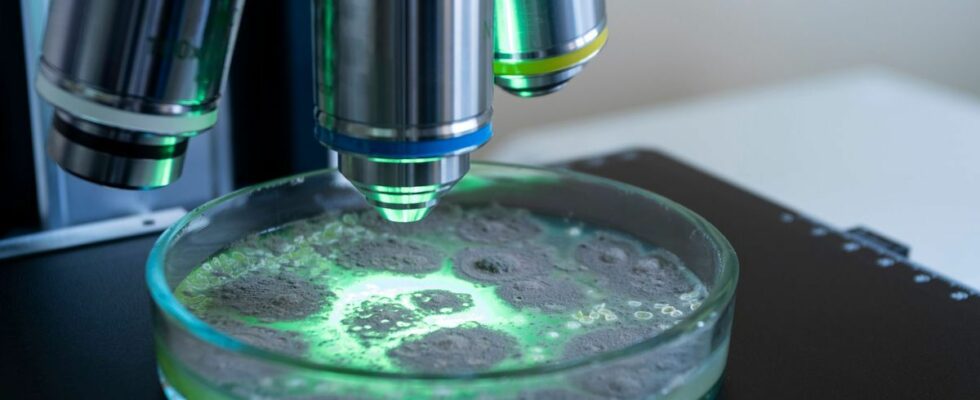Published on
updated on
Reading 3 min.
It can start very mundanely, after a slip in the bathroom or an injury playing baseball. But once an infection with antibiotic-resistant bacteria sets in, it can be difficult to diagnose, and especially to treat.
Antibiotic resistance, an often underestimated health scourge, could directly kill 39 million humans in the next quarter of a century, according to a recent estimate. Before a high-level meeting on Thursday, on the sidelines of the UN negotiations in New York, three survivors testified to AFP.
In October 2020, veterinarian John Kariuki Muhia slipped in his bathroom in Nairobi, Kenya’s capital, and broke his hip. He had surgery to place pins in the joint.
“Immediately afterwards I became very, very ill“, he says. He was given a whole series of antibiotics, without success. Same scenario for the removal of the pins. His doctors feared that he would die. And at that moment, he had the Covid.”I was fighting to survive“, he emphasizes.
After five months in hospital, he returned home but remained bedridden. John Kariuki Muhia believes he was “lucky” to have previously studied and suspected antimicrobial resistance.
He therefore did an antibiogram, which allowed 18 different antibiotics to be tested on his infection. One of them worked, and in November 2021 it was judged cured.
But he is now “disabled for life”, his right leg shortened by almost eight centimeters. “We are all vulnerable“, warns John Kariuki Muhia, who is due to speak on Thursday and calls for action.
For Anthony Darcovich, it all started in the early 2000s while playing baseball, when he tore the rotator cuff in his right shoulder. A relatively “injuryboring” in the eyes of doctors, says this 34-year-old man, currently living in New York.
Dangerous antibiotic resistance
He underwent a series of operations to repair his shoulder and stop the pain. In vain. Before each operation, he was given common antibiotics to prevent infection. After the seventh operation, doctors detected an antibiotic-resistant infection in his shoulder. And “each operation spread the infection further“, he explains.
Anthony Darcovich underwent 12 other procedures to remove “infected material,” including screws and grafted cartilage. His articulation was “completely destroyed“, his shoulder completely replaced by a prosthesis. His hope now is to one day be able to “raise his arm to shoulder height”.
Her case differs from many others because the bacteria that infected her shoulder is normally benign – it usually causes acne. But because it had become resistant to antibiotics, it spread once into the joint and caused damage.
“We lived in a world where, more often than not, we could treat a lot of infections quite effectively. But, in a context of resistance, this scenario no longer holds“, underlines Anthony Darcovich, now an advocate for antibiotic-resistant patients.
Bhakti Chavan had just finished her studies in Bombay, India, in 2017 when she noticed a swelling in her neck. Her doctor prescribed antibiotics, but the swelling did not go down, says this 30-year-old researcher.
After a few tests, he was diagnosed with drug-resistant tuberculosis, a common and dangerous form of antibiotic resistance.
First- and second-line medications did not work, but she had access to two new medications, through Médecins sans Frontières. The side effects, often distressing, plunged her into depression, and the “stigma” surrounding tuberculosis dissuaded her from speaking about her situation.
After two years of treatment with eight different antibiotics – including “painful daily injections for eight months” -, Bhakti Chavan is now in good health.
But she worries that too few people, including some doctors, are unaware of the threat of antibiotic resistance.
Yet, she warns, “this can happen to anyone“.
